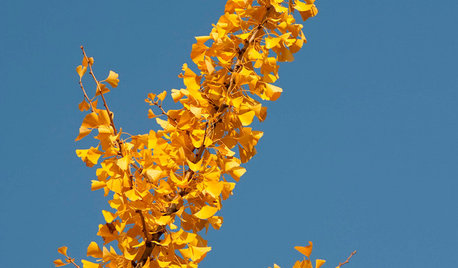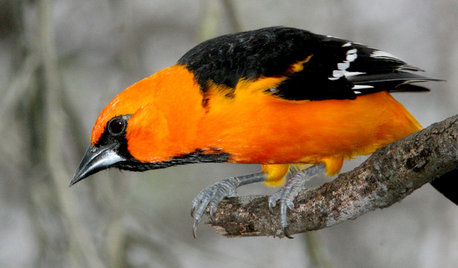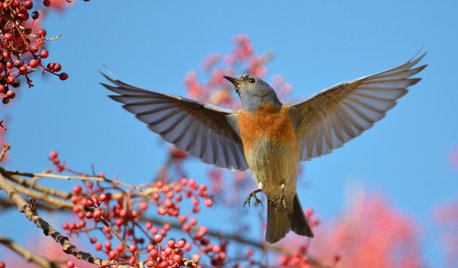Anyone had a 'certified male' Ginkgo produce fruit?
slimwhitman
14 years ago
Related Stories

GOLD FOLIAGEGreat Design Plant: Ginkgo Biloba
This ancient tree provides shade, tolerates urban planting conditions and explodes with golden yellow fall color
Full Story
GARDENING GUIDESBackyard Birds: Orioles Return After Spending Winter in the Tropics
These colorful songbirds prefer woodlands and forest edges, but they’ll visit yards with fruit-producing trees and shrubs
Full Story
EDIBLE GARDENSSummer Crops: How to Grow Squash
Almost foolproof and with cheerful flowers, squash comes in a wide range of varieties to plant in spring
Full Story
EDIBLE GARDENSHow to Grow Your Own Sweet Summer Crops
This guide will help any gardener get started on growing the freshest warm-season veggies and berries for summer
Full Story
FRUIT TREESHow to Grow Your Own Persimmons
Sturdy and easy to care for, these trees offer bright fruit through winter — and keeping them in bounds is no sweat
Full Story
GARDENING GUIDESHow to Bring the Joy of Bluebirds to Your Garden
Attract these beautiful songbirds with nesting habitat and food sources, including berry-producing trees and shrubs
Full Story
FARM YOUR YARDRemake Your Backyard Into a Mini Farm
You can get a taste of country life by line-drying your laundry, growing some produce or going whole hog with the critters
Full Story
SPRING GARDENINGSummer Crops: How to Grow Strawberries
Pluck your own sweet strawberries right from the garden vine for smoothies, salads or eating then and there
Full Story
SUMMER GARDENINGHow to Grow Basil
Bright color, quick growth and endless uses for cooking make this summer annual a winner in the garden or a pot
Full Story
SUMMER FRUITS AND VEGETABLESHow to Grow Your Own Fresh, Sweet Corn
Here's how to plant and care for your own mini cornfield
Full Story







hortster
slimwhitmanOriginal Author
Related Professionals
North New Hyde Park Landscape Architects & Landscape Designers · Cicero Landscape Contractors · Firestone Landscape Contractors · Laguna Hills Landscape Contractors · Medford Landscape Contractors · Petaluma Landscape Contractors · Stallings Landscape Contractors · Vallejo Landscape Contractors · West Orange Landscape Contractors · Silver Firs Landscape Contractors · Broomfield Siding & Exteriors · Dale City Siding & Exteriors · Honolulu Siding & Exteriors · Gaithersburg Decks, Patios & Outdoor Enclosures · Rantoul Decks, Patios & Outdoor Enclosuresrain2fall
hortster
brandon7 TN_zone7
slimwhitmanOriginal Author
rain2fall
ryan_tree
rain2fall
brandon7 TN_zone7
ryan_tree
rain2fall
brandon7 TN_zone7
pineresin
pineresin
lucky_p
brandon7 TN_zone7
l_james
rain2fall
brandon7 TN_zone7
brandon7 TN_zone7
slimwhitmanOriginal Author
brandon7 TN_zone7
noki
brandon7 TN_zone7
rain2fall
brandon7 TN_zone7
brandon7 TN_zone7
rain2fall
brandon7 TN_zone7
rain2fall
brandon7 TN_zone7
brandon7 TN_zone7
mmccoy3636
dnarex
slimwhitmanOriginal Author